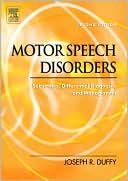Clinical Decision Making in Fluency Disorders
This thoroughly updated edition provides an expansive discussion of the therapeutic journey to increasing fluency. Humor, creativity, and other effective clinical techniques and principles are presented using a framework of personal experience. Thoroughly discussed are the options and challenges faced by those who stutter and the clinicians who assist them in effectively communicating. Whether you are a student or a clinician, this text will provide you with the tools essential in making...
Search in google:
CLINICAL DECISION MAKING IN FLUENCY DISORDERS presents therapeutic tools for the speech-language pathologist to assist patients who stutter. Recent empirical evidence is interwoven with real world examples of the diagnostic and therapeutic options that both the speaker and the clinician will consider. CLINICAL DECISION MAKING IN FLUENCY DISORDERS also reviews goals, techniques for assessment and counseling, and ongoing disorder management. An online companion website provides video commentary by the author, slides created in PowerPoint? correlated to chapter, as well as video and audio examples of various fluency problems and therapeutic sessions. Doody Review Services Reviewer:Jim Zeigler, MA(Northern Michigan University)Description:In this book on fluency disorders, the author uses the first person, active tense, creating the ambience of a classroom. The clinical applications and the evidentiary support sections clearly set this book apart from others in the field. The emphasis on clinicianship is superbly presented and highly valuable to practicing professionals, graduate students, and even undergraduates who are encountering the science of caring for those with dysfluent speech for the first time.Purpose:In my 14 years of practice and mentorship under Lon Emerick, clinicianship and mental hygiene have always been paramount concerns of mine. It is refreshing to see a book successfully address this all-important aspect of speech pathology. In a superb initial chapter, the author renders an operational and realistic definition of clinicianship that everyone who endeavors to help those who stutter can grasp and apply immediately. Audience:This book is masterfully crafted for graduate students and practicing professionals in speech-language pathology. This is an indispensable tool I wouldn't want to be without. Features:The writing style and the choice of the first person, active voice creates such an immediate atmosphere that readers can't help but become engaged, enlightened, and entertained. The strategic placement of anecdotal and clinical applications adds just the right amount of real-world information students are looking for in their learning materials. The author's enthusiasm and heartfelt dedication to the study and treatment of fluency disorders are apparent. Structuring the chapters in sections that include theory/practice and then evidence supports evidence-based practice -- something we all are striving for and the field is demanding. Neuroimaging and genetic research are two areas of cutting-edge science that certainly reflect the zeitgeist, and the way they are presented is both complete and intriguing. The discussions of the human genome project and its implications for the field of speech-language pathology are full of new vocabulary and concepts, yet the author presents a succinct and understandable account of this area. Many of the newer books, including eclectic ones, fail to clarify the stuttering modification approach with which Charles Van Riper changed the field. Dr. Manning gives a good tribute and objective coverage to this critical topic. Sections focusing on assessment and treatment modalities are detailed, yet succinct and not overwhelming. No other book I've read covers theory in such an interesting and exciting way. This is a master publication crafted by a master clinician for both upcoming practitioners and practicing clinicians who could use a refresher. Assessment:This book offers an engaging pedagogy that no other text I've encountered succeeds in doing. The objectives are clear and the application to everyday practice is like no other book I've read. In the field of fluency disorders, the research with fMRI and genetics is constantly bringing to light new understanding while discounting old methods -- so, yes, it is necessary to maintain absolute currency and still honor the traditions that have laid the foundations for today's research.
Preface. 1. The Clinician and the Therapeutic Process. 2. The Nature of Fluent and Nonfluent Speech: The Onset of Stuttering. 3. An Historical Perspective of Etiologies. 4. The Assessment Process with Adolescents and Adults. 5. The Assessment Process with Young Speakers: Preschool and School-age Children. 6. Facilitating Therapeutic Change. 7. Counseling and People who Stutter. 8. Successful Management of Stuttering for Adolescents and Adults. 9. Facilitating Fluency for Preschool and School-Age Children. 10. Assessment and Management for Atypical Fluency Disorders. 11. Indicators of Successful Change During Treatment. 12. Indicators of Successful Change Following Treatment. Epilogue. References.
\ From the Publisher"Manning is one of the few authors who can present the disorder of stuttering to readers who do not stutter in a way that makes sense. This text presents the totality of the stuttering disorder in way that is logical, comprehensive, and supported by evidence (from multiple sources)."\ "This text is by far the most useful text book that I have my students read. We read it from cover-to-cover and spend a great deal of time discussing the unique way that Dr. Manning describes the role of the clinician in the assessment and treatment of stuttering. This book teaches students not only how to work with persons who stutter - but how to become a knowledgeable, caring, professional clinician."\ \ \ \ \ \ Reviewer: Jim Zeigler, MA(Northern Michigan University)\ Description: In this book on fluency disorders, the author uses the first person, active tense, creating the ambience of a classroom. The clinical applications and the evidentiary support sections clearly set this book apart from others in the field. The emphasis on clinicianship is superbly presented and highly valuable to practicing professionals, graduate students, and even undergraduates who are encountering the science of caring for those with dysfluent speech for the first time.\ Purpose: In my 14 years of practice and mentorship under Lon Emerick, clinicianship and mental hygiene have always been paramount concerns of mine. It is refreshing to see a book successfully address this all-important aspect of speech pathology. In a superb initial chapter, the author renders an operational and realistic definition of clinicianship that everyone who endeavors to help those who stutter can grasp and apply immediately. \ Audience: This book is masterfully crafted for graduate students and practicing professionals in speech-language pathology. This is an indispensable tool I wouldn't want to be without. \ Features: The writing style and the choice of the first person, active voice creates such an immediate atmosphere that readers can't help but become engaged, enlightened, and entertained. The strategic placement of anecdotal and clinical applications adds just the right amount of real-world information students are looking for in their learning materials. The author's enthusiasm and heartfelt dedication to the study and treatment of fluency disorders are apparent. Structuring the chapters in sections that include theory/practice and then evidence supports evidence-based practice — something we all are striving for and the field is demanding. Neuroimaging and genetic research are two areas of cutting-edge science that certainly reflect the zeitgeist, and the way they are presented is both complete and intriguing. The discussions of the human genome project and its implications for the field of speech-language pathology are full of new vocabulary and concepts, yet the author presents a succinct and understandable account of this area. Many of the newer books, including eclectic ones, fail to clarify the stuttering modification approach with which Charles Van Riper changed the field. Dr. Manning gives a good tribute and objective coverage to this critical topic. Sections focusing on assessment and treatment modalities are detailed, yet succinct and not overwhelming. No other book I've read covers theory in such an interesting and exciting way. This is a master publication crafted by a master clinician for both upcoming practitioners and practicing clinicians who could use a refresher. \ Assessment: This book offers an engaging pedagogy that no other text I've encountered succeeds in doing. The objectives are clear and the application to everyday practice is like no other book I've read. In the field of fluency disorders, the research with fMRI and genetics is constantly bringing to light new understanding while discounting old methods — so, yes, it is necessary to maintain absolute currency and still honor the traditions that have laid the foundations for today's research.\ \ \ BooknewsManning (audiology and speech language pathology, U. of Memphis) provides clinicians and students with a clear, personable discussion of the assessment-treatment process. Covers clinician characteristics; theories of etiology; characteristics of stuttering onset and development; assessing adolescents, adults, and children; facilitating the change process; counseling strategies and techniques; treatment for adolescents, adults, preschool, and school-age children; and indicators of progress during and after treatment. Appendices list assessment procedures, resources and support groups, and guidelines for treatment practice. Annotation c. Book News, Inc., Portland, OR (booknews.com)\ \
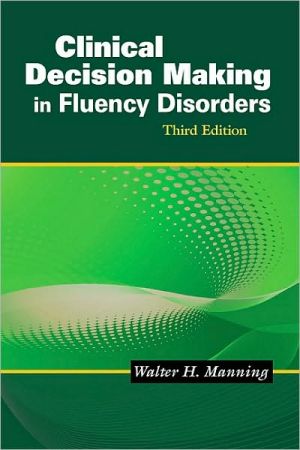
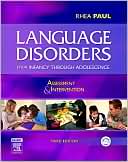

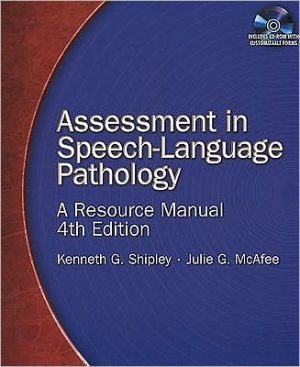
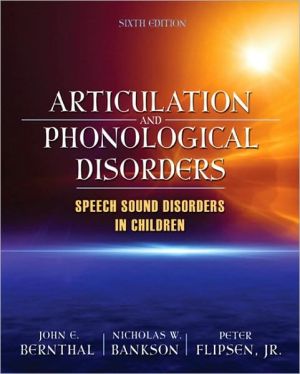
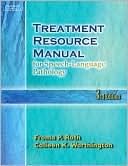
![Introduction to Audiology [With CDROM] Introduction to Audiology [With CDROM]](/application/data/covers/31/18/9780205593118.jpg)
